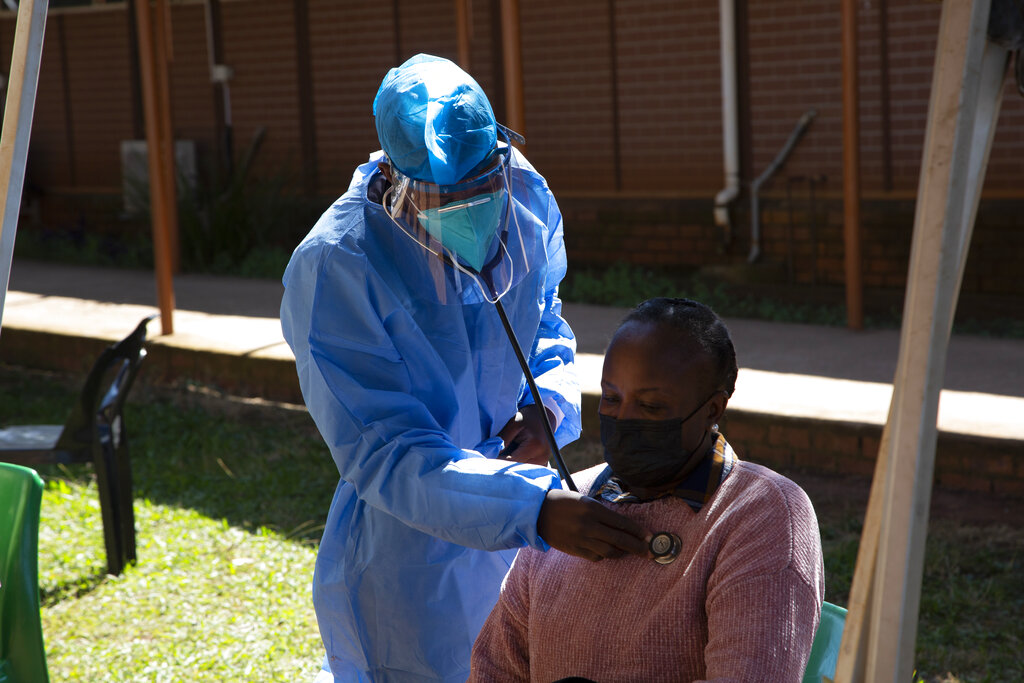ADF STAFF
As the virus that causes COVID-19 has mutated and evolved throughout the pandemic, its symptoms also have changed.
Research by the Zoe Health Study, formerly known as the COVID Symptom Study, shows how variants have changed the virus’s impact on the body.
During the first three waves of the disease around the world, many patients experienced a loss of smell, loss of taste and brain fog.
Now, those symptoms are not among the most common.
The ZOE study received data from more than 4 million people who used the project’s app to record their symptoms. The study ranked the symptoms by prevalence through October 20.
Headache, sore throat, runny nose, fever and a persistent cough were the five most common symptoms.
“Anosmia (loss of smell) comes in at number 9 and shortness of breath comes far down the list at number 30, indicating the symptoms as recorded previously are changing with the evolving variants of the virus,” the ZOE study said.
In South Africa, the hardest hit country on the continent, the omicron variant of COVID-19 brought some changes to patients’ most common symptoms in late 2021.
Dr. Angelique Coetzee, a private practitioner based in Pretoria, was among the first in the world to report the change in symptoms.
She saw 30 patients in 10 days who had experienced similar infections and none of the previous hallmarks of the disease, such as loss of smell or taste.
“The most predominant clinical complaint is severe fatigue for one or two days,” Coetzee told Reuters news service. “With them, the headache and the body aches and pain.
“Symptoms at that stage was very much related to normal viral infection.”
Since omicron swept the globe, one of its subvariants, called BA.5, has become the dominant strain in South Africa.
BA.5 made up 83% of COVID-19 cases in October 2022, according to the Network for Genomic Surveillance in South Africa.
But BA.5 symptoms, like its omicron parent in general, have remained mild. Its symptoms still largely resemble those of an upper respiratory infection or influenza.
South Africa’s largest private health insurer, Discovery, reported that people with omicron often develop a scratchy or sore throat, nasal congestion, a dry cough and muscle pain, especially low back pain.
In its most recent update in September 2022, the Africa Centres for Disease Control and Prevention (Africa CDC) listed the following symptoms that could call for taking a COVID-19 test: fever or chills, cough, sore throat, shortness of breath or difficulty breathing, fatigue, headache, muscle aches.
“People with mild COVID-19 experience symptoms such as fever, sore throat, cough or headache but do not have symptoms of respiratory distress,” Africa CDC stated in its September Test to Treat guidelines for member states.
In Pretoria, Coetzee has appeared in the media and become something of a celebrity for treating what some regard as the world’s first omicron patient.
She has differentiated the symptoms of delta and omicron:
- Delta presents with a loss of smell and/or taste and sore throat. Some cases show fever, elevated heart rate and low oxygen levels and can progress quickly to severe disease where the patient needs oxygen.
- Omicron presents with more mild symptoms including headache, scratchy throat, persistent cough, blocked or runny nose, and musculoskeletal pain.
“You have to understand the symptoms, it’s extremely important,” she said to New Zealand’s 1news television network.
Coetzee predicted that COVID-19 and its many variants will evolve “for still a long time to come.”
“We are not going to get out of this easily,” she told the website MoneyControl.

